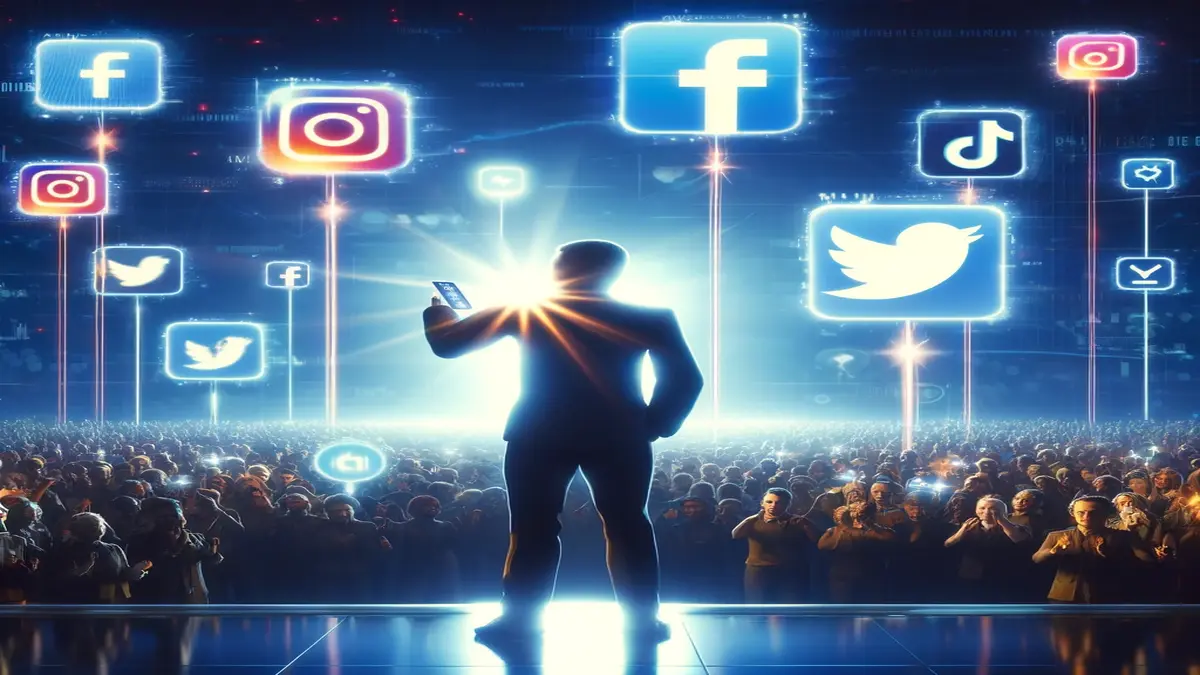Once upon a time, political campaigns were all about knocking on doors, kissing babies, and flooding TV screens with carefully scripted ads. Fast forward to today, and the real battleground is online. Social media has flipped the script on election strategies, giving candidates direct access to millions of voters—unfiltered, unregulated (mostly), and sometimes, utterly chaotic.
But make no mistake: digital marketing in politics isn’t just about tweets and TikToks. It’s about influence, engagement, and sometimes, outright manipulation. Let’s break down how social media is reshaping modern elections.
1. The Power of Instant Connection
Before the rise of social media, political messages spread at a much slower pace—through newspapers, televised debates, or local town halls. Today, a single post can reach millions within seconds, shaping public perception overnight. From fiery debate clips on X (formerly Twitter) to polished Instagram stories, the influence of social media is undeniable. Take former U.S. President Donald Trump, for example—his online presence played a massive role in shaping political discourse. Just as social media has revolutionized politics, it’s also transforming the financial world, sparking global conversations about the future of cryptocurrency and how digital platforms amplify emerging economic trends.
2. Micro-Targeting: The Game-Changer in Election Strategies
Social media platforms know you better than your best friend. Every like, share, and comment feeds an algorithm that builds a digital profile of you. Campaigns use this data for micro-targeting, crafting messages tailored to specific voter groups.
Undecided voters? Show them an ad about economic policies.
Young progressives? Push climate change content.
Older conservatives? Highlight national security issues.
The 2016 and 2020 U.S. elections saw unprecedented use of Facebook’s ad targeting tools. Political strategists fine-tuned messages down to zip codes, voting history, and even personality traits. That’s digital marketing in politics at its peak.
3. The Rise of Influencers and Grassroots Movements
Forget traditional endorsements. Today’s political influencers aren’t just celebrities—they’re YouTubers, TikTok creators, and even meme pages. When a popular social media figure backs a candidate, it can sway millions of followers.
Case in point: Alexandria Ocasio-Cortez (AOC). Her campaign thrived on social media, using casual Instagram Q&A sessions and behind-the-scenes content to connect with young voters. No polished TV ads—just authenticity and direct engagement.
On the flip side, movements like Black Lives Matter and #MeToo gained momentum through social media, influencing political agendas without needing traditional campaign structures. It’s proof that power is shifting from party elites to digital grassroots activists.
4. The Dark Side: Misinformation and Manipulation
With great power comes… a flood of fake news. Social media isn’t just a tool for outreach—it’s also a weapon for misinformation.
From deepfake videos to fake news articles, political campaigns (and foreign actors) have exploited social media to spread disinformation. The 2016 U.S. election saw Russian bots flood Facebook with divisive content, while conspiracy theories spread like wildfire in 2020.
Platforms like Facebook and YouTube have tried to crack down on misinformation, but it’s a game of whack-a-mole. Once false narratives take root, they’re hard to erase. And let’s be real—outrage drives engagement. Social media algorithms prioritize controversy, making polarizing content more visible.
5. Cancel Culture & The Double-Edged Sword of Virality
Social media can make or break a campaign overnight. One misstep, one old tweet resurfaced, and suddenly a candidate is “canceled.”
Remember Howard Dean’s infamous “scream” in 2004? It ended his campaign. Today, that moment would be a meme within minutes. Social media amplifies mistakes at lightning speed.
But virality isn’t always bad. In 2008, Barack Obama’s campaign leveraged online momentum, using platforms like MySpace (yes, really) and Facebook to mobilize young voters. His “Hope” poster became an iconic image, proving that viral content can win elections.
Final Thoughts: The Future of Politics is Digital
Like it or not, social media is now the heartbeat of political campaigns. It’s where policies are debated, movements are born, and elections are won (or lost). But with great influence comes responsibility. The challenge moving forward? Balancing digital engagement with truth, ethics, and accountability.
Because in the end, it’s not just about likes and shares—it’s about the future of democracy.









